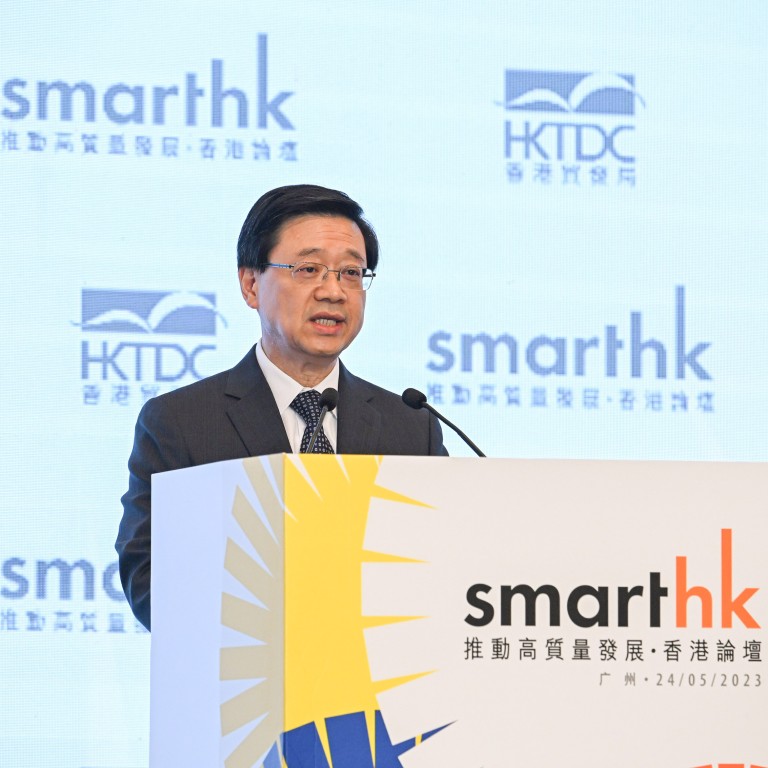
Hong Kong and Guangdong will deepen cooperation to boost high-quality growth in Greater Bay Area, John Lee says
- Chief Executive John Lee says he will undertake frequent visits to cities in the Greater Bay Area and seek closer ties with Guangdong
- Hong Kong and Guangdong have announced a slew of business and trade activities this week to boost high-quality development
Hong Kong and Guangdong are deepening cooperation to further integrate the economies of the Greater Bay Area (GBA), with the two jurisdictions unveiling a week of events and business activities to achieve high-quality growth in the post-pandemic era.
The city’s leader John Lee Ka-chiu said he will undertake more visits and hold discussions with Guangdong officials as normality has returned following the border reopening with the mainland after Covid-19 restrictions were lifted.
“We will enhance mutual cooperation [with Guangdong and pursue] high-quality growth to facilitate Hong Kong’s integration with the nation’s development,” Lee said at the SmartHK Forum in Guangzhou on Wednesday.
His comments underscore deepening ties among governments in the Greater Bay Area in the post-pandemic era, as China spares no efforts to revive its economy. The quest for high-quality growth in the bay area is a nod to Beijing’s call to tackle bottlenecks in the nation’s economy to drive recovery.

“Guangdong’s pursuit of high-quality development provides unlimited business opportunities for domestic and overseas companies including Hong Kong enterprises,” said Wang Weizhong, the governor of the southern Chinese province. “We hope that Hong Kong companies will bring capital, technologies and management to strengthen cooperation.”
To achieve that goal, Wang said the province was focusing on hi-tech industries, such as digital information, new materials and renewable energy, while at the same time maintaining the key role of its manufacturing sector.
Hong Kong businesses have set up 210,000 entities in Guangdong, accounting for 70 per cent of the overseas companies in the province, while those from Guangdong have established some 9,000 companies in the financial hub, according to Lee.
The forum has been organised and supported by a number of Hong Kong government departments including the Hong Kong Trade Development Council.
Around 70 Hong Kong businesses set up booths to introduce products and services that the city can provide in areas like professional services, tech innovation and design. Businesses from both sides also took part in a session to match partners.
Since the borders reopened between Hong Kong and the mainland in February, governments and businesses have embarked on numerous trips and meetings, including Lee’s visit to four cities in the bay area.
As part of the enhanced cooperation between the Greater Bay Area cities, Tang Ping-keung, Hong Kong’s Secretary for Security, on Wednesday led a team on a two-day trip to Guangzhou, Dongguan and Huizhou. He is expected to meet his local counterparts in these cities and visit companies specialising in innovation and technology.

